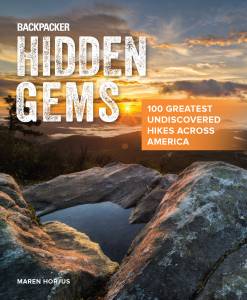These backpacking trips in the United States deserve John Muir Trail-level hype and Narrows-style recognition — but no one knows yet. Ditch the crowds on these weekend adventures that have been solitude glutton-approved.
Find a new adventure in the book “Backpacker Hidden Gems: 100 Greatest Undiscovered Hikes Across America.” Author Maren Horjus, Backpacker Magazine’s destinations editor, gives a sneak peek at 10 to whet your appetite.
1. Gore Range, Eagles Nest Wilderness, Colorado
Pitch-anywhere lakeshores and obscure summits are hard to find near Denver — the one downside of living in the country’s multisport capital. But there’s a workaround: the Gore Range. Devoid of 14,000-foot peaks — and, quite frankly, trails — the area simply doesn’t attract crowds. And for that reason, it doesn’t require a rigorous permit system.
So you might feel like you’re cheating when you’re tracing its 50-mile-long rampart of Thirteeners, taking your pick of pointy peaks, glacially carved valleys, and aquamarine lakes. It’s the way hiking in Colorado should be.

2. Gap Run, Shenandoah National Park, Virginia

3. Jones Hole, Dinosaur National Monument, Utah

4. Indian Point, Garden of the Gods Wilderness, Illinois

5. Redwood Canyon, Kings Canyon National Park, California

6. Sal Hollow, Mammoth Cave National Park, Kentucky
7. Sahale Glacier Camp, North Cascades National Park, Washington

8. Charon’s Garden, Wichita Mountains Wildlife Refuge, Oklahoma











